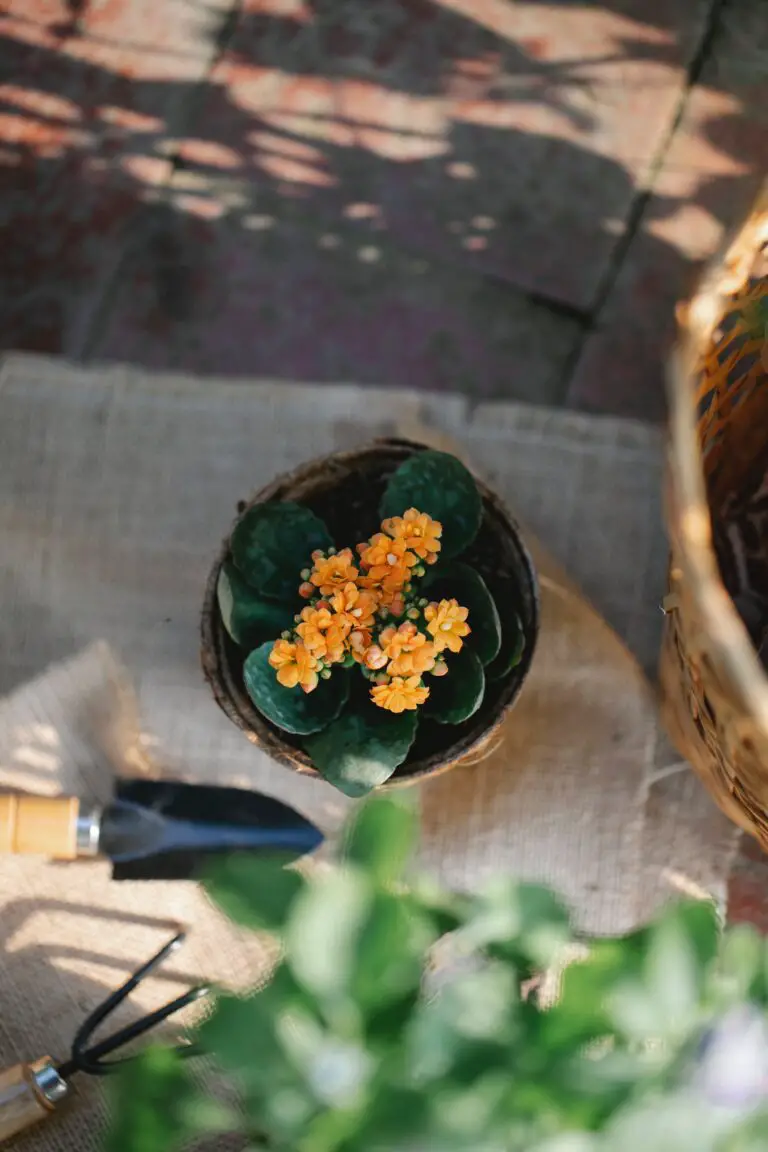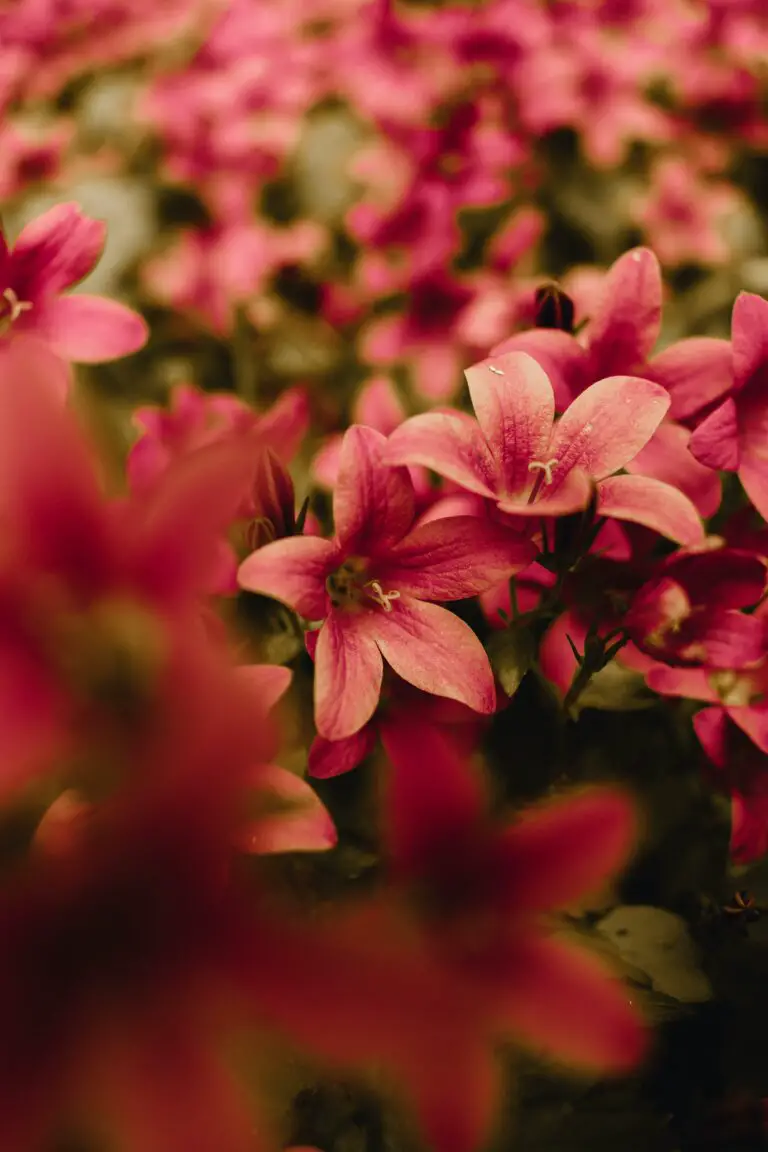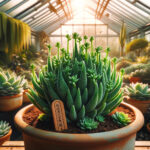Introduction to the Kalanchoe Flower
Immerse yourself in the vivacious universe of Kalanchoe flowers, a spectacular beacon within the diverse succulent family. Their dazzling appearance belies a truly resilient nature, allowing them to thrive in environments that would wilt lesser blooms. Originating from the ancient lands of Madagascar, these resilient plants have traversed continents, captivating gardeners and indoor plant enthusiasts alike.

Each Kalanchoe tells a tale – from the fiery blossoms of the Kalanchoe blossfeldiana, popularly known as the Flaming Katy, to the exotic formations of Mother of Thousands. These plants don’t just decorate our windowsills; they weave into the fabric of our homes a thread of hardy beauty.
For those enchanted by the resilient and easy-care nature of succulents, the Kalanchoe is a prime specimen. Its fleshy leaves defy dry spells while its buoyant blooms can punctuate even the drabbest of days with vibrant color. Wondering how to foster your own assortment of Kalanchoes? Glean essential tips from sources like Gardener’s Path to ensure these flowers flourish under your care.
Step into the world of succulent care, where Kalanchoes stand as a testament to nature’s adaptability and our desire to surround ourselves with enduring loveliness. These blossoming wonders exemplify the joy and satisfaction of plant care, promising a fulfilling journey for both novices and seasoned green thumbs.
Understanding Kalanchoe Botany
Imagine a little bit of the tropics right in your home, with vibrant flowers that could brighten even the dullest of days. That’s the delight a Kalanchoe brings to your space, thanks to its unique botanical characteristics. Kalanchoe species are not just any ordinary succulents; they boast a veritable palette of color, form, and texture that sets them apart in the succulent world. Today, let’s delve deep into the botany of these fascinating plants.
Part of what makes Kalanchoe flowers stand out are their fleshy leaves, which are adapted to store water and help them survive in arid environments. These leaves come in various shapes and sizes, depending on the species. Some flaunt scalloped edges that could easily be the envy of any fancy pastry chef, while others are as smooth as pebbles in a zen garden. But it’s not just the leaves; the blooms of the Kalanchoe are where nature’s party really starts. With clusters of tiny, vibrant flowers emerging like constellations on sturdy stems, each bloom is a microcosm of beauty.
What really grabs the spotlight, though, is the Kalanchoe’s ability to propagate in what seems like a magical process. Baby plants emerge from the edges of leaves, promising new growth and making propagation a breeze. And when you think it’s reached its peak, the Kalanchoe surprises you with the sheer variety of species – from the flaming Katy to the panda plant, each one is a testament to the diversity of this botanical wonder.
To get a visual idea of the variety and versatility of the Kalanchoe’s botany, let’s take a moment to watch this insightful video detailing different varieties and their care tips.
We’ve only just touched the surface of what these plants can offer. For instance, the flaming Katy (Kalanchoe blossfeldiana) is well-loved for its cheerful, long-lasting flowers that can bloom even during the chill of winter, brightening up our homes when most plants are hibernating. This adaptability is also mirrored in their growing conditions; while they thrive in warmth and sunlight, they are remarkably forgiving if forgotten for a day or two, making them perfect for plant parents with a busy schedule.
For those looking to expand their succulent landscape, learning more about Kalanchoe thyrsiflora and its vibrant, paddle-shaped leaves can be a true delight. And let’s not forget the fascinating Kalanchoe pinnata, which carries a storied past of medicinal use, being dubbed ‘the first-aid plant’ with its purported healing properties.
These plants are more than just a pretty face in the pantheon of succulents; they are botanically robust and symbolize a perfected adaptation to less-than-perfect environments. When one looks at the resilient Kalanchoe, it’s akin to seeing Mother Nature’s blueprint for survival – a blueprint that entices us with both its simplicity and its complexity. Discovering Kalanchoe flowers is indeed a chronicle of blossoming facts, tips, and the sheer joy of botany.
The Diversity of Kalanchoe Species
Dive into the various species of Kalanchoe and how their distinctive features contribute to their popularity. Imagine walking through a lush garden, each turn introducing you to a different member of the Kalanchoe family. Just like a gathering of vibrant personalities, these plants exude unique charm and characteristics that make them stand out.
For starters, let’s take the charming Kalanchoe blossfeldiana, the most widely recognized member of the clan, beloved for its bold, festive blooms that brighten homes during the winter months. Moving through our garden, the Kalanchoe beharensis, or ‘Felt Bush’, waves with its fuzzy, ear-shaped leaves, showing off a texture that invites a gentle touch.
But the Kalanchoe diversity doesn’t end there. Consider the Kalanchoe tomentosa, known as the ‘Panda Plant’, whose leaves are like the soft paws of a panda, covered with fine hairs and tipped with rust-colored spots. It’s a perfect example of how these plants have adapted to captivate and charm their human caretakers.
To add to the spectacle, we have the Kalanchoe pumila, the ‘Flower Dust Plant’, which looks as though it has been sprinkled with fairy dust, its leaves shimmering with a silver sheen. This plant showcases a delicate ballet of bloom and foliage, demonstrating the dainty side of the Kalanchoe family.

Every Kalanchoe species has its stage, and each one performs its role with gusto. They range from the sun-seeking ‘Desert Rose’ with its woody stems and trumpet-shaped flowers to the ground-hugging ‘Widow’s-Thrill’, which often spills over the sides of pots in bountiful cascades of color. It’s this versatility and verve that have made Kalanchoe species a constant feature in both indoor and outdoor gardens across the globe.
As you become more acquainted with the Kalanchoe family, you’ll find how wonderfully diverse this group is. Be it the resilience of the Kalanchoe daigremontiana, which cleverly propagates its offspring on the edges of its leaves, or the Kalanchoe marmorata, which paints a masterpiece with marbled green and white leaves. These plants not only survive but thrive, sharing a zest for life that’s downright contagious.
So, what makes the Kalanchoe such a crowd-pleaser? It’s a combination of their audacious blooming habits, their adaptability to a range of environments, and their overall unfussy nature. Go on, befriend a Kalanchoe, and watch as this flowering favorite takes center stage in your garden—every species has a tale to tell, a lesson in botanical brilliance that’s ripe for exploration.
Optimal Growing Conditions for Kalanchoe
Thriving in the right environment, the Kalanchoe flower is a spectacle to behold with its vivid hues and lush foliage. Imagine stepping into a sunlit room, where potted Kalanchoes line the windowsill, each one bursting with radiant flowers. This isn’t just a dream scenario, it’s a realistic outcome when you provide your Kalanchoe plants with their ideal growing conditions.
Light: A Kalanchoe’s Best Friend
Light is a pivotal chapter in the Kalanchoe flower chronicles. These vibrant beauties soak up the sun like a sponge. Ideally, they prefer bright, natural light but are forgiving enough to tolerate moderate indoor lighting. Picture a Kalanchoe basking in the early morning light on the east-facing edge of your balcony, its delicate petals unfurling with the sunrise—this is their happy place. But take care, as the harsh afternoon sun can be a fiercer foe than ally, sometimes scorching their tender blooms.
Temperature and Humidity: The Comfort Zone
Kalanchoes hail from the tropics, which means warm climates are where they feel most at home. They like their surroundings to stay consistent, between 60°F to 85°F (16°C to 29°C) – any temperature beyond this range, and these succulent plants start to feel out of sorts. While they can handle a bit of humidity, these flowers are not fans of the Amazonian rainforest climate. A tip from a seasoned grower—keep your plant away from drafty windows or air conditioning vents to avoid sudden temperature shocks.
Soil and Water: The Balancing Act
When it comes to soil, think light and well-draining. Ever seen a Kalanchoe looking down in the dumps with yellowing leaves? Chances are it has been sitting in soggy soil for too long. These plants prefer a drier habitat, like an arid desert oasis, rather than a waterlogged marsh. Watering is a delicate dance—the key is to wait until the top inch of soil is dry before giving it another drink. Overwatering is the silent assassin of many a Kalanchoe plant; it’s all about balance and attentiveness.
Now that you’ve grasped the essentials of what makes Kalanchoe thrive, it’s time to put that knowledge into action. Watch this insightful video for a more visual guide on how to care for your Kalanchoe plant and ensure a healthy, flourishing bloom:
By understanding and meeting these optimal growing conditions, you can look forward to a celebration of flowers that makes every day a bit brighter. The Kalanchoe flower, with its charming allure, will happily reward you with a spectacular show of color and life when cared for with a touch of knowledge and a lot of love.
A Step-by-Step Guide to Kalanchoe Care
Embarking on the delightful journey of nurturing a Kalanchoe flower can be as rewarding as witnessing its blossoming splendor. These resilient succulents, hailing from the rugged terrains of Madagascar, bring a burst of color and life to any setting. To ensure their vibrant flourish, let’s delve into the essentials of Kalanchoe care, guiding you through every step with the finesse of a seasoned gardener.
Watering Wisdom for Kalanchoe Thrival
Just like the art of brewing the perfect cup of tea, watering your Kalanchoe requires precision and balance. A rule of green thumb is to let the soil approach dryness between waterings, simulating the natural arid habitat of these plants. Imagine your Kalanchoe’s roots as a parched wanderer in the desert, where a quenching rain is sporadic yet life-sustaining. This approach ensures your floral companion avoids the dreaded perils of root rot, promoting its long-lasting vibrancy.
The Sunlight Sonata
Picture your Kalanchoe basking in the gentle morning sun of Madagascar, absorbing just the right amount of light to ignite its photosynthetic symphony. Recreating this milieu at home means positioning your leafy friend in indirect, bright light, where it can soak up the sun’s rays without the threat of an unwelcome sunburn. East or west-facing windowsills are the premium box seats for your Kalanchoe’s daily light show.
Soil: The Foundation of Floral Health
The cornerstone of every plant’s well-being lies in the soil it calls home. For a Kalanchoe, the ideal mix is one that echoes the loose, well-draining qualities of a sandy savanna. A concoction of potting soil blended with perlite or sand paves the path to an environment where roots can breathe freely and excess water escapes without a trace. It’s akin to donning the perfect hiking boots that guard against blisters on an arduous trek through rugged landscapes.
To further your gardening expertise, consider exploring other facets of succulent care. Perhaps a visit to our Ultimate Guide to Succulent Care might shed more light on the soil mixtures and unique intricacies of succulent ecosystems!
And now, for those visual learners, immerse yourself in the detailed care tips by watching this insightful and practical video:
Remember, the chronicles of your Kalanchoe’s life story are penned through the daily care rituals you bestow upon it. By following these steps, you equip yourself with the knowledge to orchestrate a botanical ballet, where each meticulous movement contributes to the grace and beauty of the Kalanchoe’s blossoming dance.
The Art of Propagating Kalanchoe
Step into the world of propagation, where you become the creator, nurturing new life from your beloved kalanchoe plants. As you embark on this green-thumbed adventure, let’s start by unraveling the mysteries of turning one kalanchoe into many. It’s simpler than you think, and the rewards? A bountiful collection of these succulent beauties, each one a testament to your gardening prowess.


First things first, choose your method. Will you go the route of seeds, where patience is a virtue, and each sprout brings the thrill of the unknown? Or perhaps you prefer the swift certainty of leaf cuttings, where each snip can lead to a new flourishing kalanchoe. Whatever path you select, the key is in the details.
Seeds or Cuttings: Deciding Your Path
If you’re leaning towards seeds, remember they need a well-balanced mix of sunlight and warmth, a gentle touch, and a whisper of moisture. It’s like crafting a micro-ecosystem where these tiny seeds can burst into life. And if it’s cuttings you’re after, the magic lies in the cut: a healthy leaf or stem, a clean snip, and a watchful eye will see your kalanchoe cuttings take root in no time.
But wait, you’re not just propagating kalanchoe—it’s more than that. You’re cultivating memories. Each new plant can be a gift, a story, or a legacy. Imagine gifting a propagated kalanchoe to a friend, telling them it’s a descendant of a plant that’s been in your family for years. Now that’s a story that grows with every new leaf!
Bring your kalanchoe journey to life. It’s a chronicle of growth, learning, and beauty—all tied back to the humble act of propagation. So, roll up your sleeves, dive in, and watch as your collection multiplies, much like the joy these charming plants bring.
Troubleshooting Common Kalanchoe Issues
As you revel in the vibrant colors of your Kalanchoe blossoms, it’s not uncommon to encounter a few bumps along the gardening road. Think of your Kalanchoe as a living puzzle; each piece, from watering to sunlight, must fit perfectly to reveal the flawless picture of health. Let me walk you through some real-world scenarios where your Kalanchoe might be throwing a tantrum, and how you can play plant-whisperer to bring it back to its joyful self.
Picture this: You’ve been diligent with your care, but recently, the leaves of your Kalanchoe have started to look like they’ve been freckled by an artist with a sadistic streak—spots everywhere! Before you consider enrolling in an art critique class, let’s assess the situation. These spots could be a cry for help, indicating potential fungal issues. The remedy? Improved airflow and a bit less affection with the watering can might just do the trick.
When Leaves Play Hide and Seek
Have you noticed your normally perky Kalanchoe leaves playing a game of hide and seek by pointing downwards? It could be a case of too much sunshine or too little water. Despite their love for bright light, too much direct sunlight can cause a sunburn, and just like us, your plant will need a shade hat (figuratively speaking). On the flip side, under-watering can give your Kalanchoe a case of the droops. So keep the soil evenly moist and your plant will thank you by standing tall and proud.
Yellowing: A Cautionary Tale
Suddenly, you might find your Kalanchoe’s leaves turning as yellow as the sun it adores. Yellow leaves can be the plant’s way of saying it’s either too thirsty or drowning in water. Striking the right hydration balance is key. Think of watering like a Goldilocks conundrum – not too much, not too little, but just right. Pause between waterings to allow the top inch of soil to dry, ensuring you’re not inadvertently hosting an unwanted pool party for the roots.
Navigating these common Kalanchoe growing problems can be as simple as observing and adjusting. Remember, responsive care tailored to your plant’s reactions is better than any blanket solution. Sometimes it helps to see things in action, so let’s break it down with this informative video that dives into common Kalanchoe leaf problems and how to address them.
By playing detective with these common issues, you ensure that your Kalanchoe continues to flourish in your care. Keep a watchful eye, and your green thumb will not only solve the mysteries of growing pains but allow your stunning Kalanchoe to thrive in its own time, adding vibrant life to your space.
Kalanchoe Across Cultures
The vibrant and varied hues of Kalanchoe flowers are not just a feast for the eyes; they have also captured the hearts of people across the globe, nestling into the rich tapestry of various cultural landscapes. From the sun-soaked terrains of Africa, where they originated, to the cozy windowsills in European homes, Kalanchoe blossoms have become a symbol of enduring beauty and resilience. But the wonder of these succulents doesn’t end with their striking appearance. Let’s delve into the cultural significance and ornamental use that make Kalanchoe flowers much more than just botanical beauties.
In China, for example, Kalanchoe flowers are often given as gifts during the Chinese New Year celebrations, symbolizing wealth, prosperity, and longevity. The bright, cheerful blooms are believed to bring good luck and positive energy into a home, aligning perfectly with the festive spirit of the Lunar New Year. It’s a tradition steeped in the belief that nature’s radiance can influence our fortunes.
In the Americas, particularly in regions of Latin America, Kalanchoe has earned its place in folk medicine, revered for its purported healing properties. From relieving headaches to calming skin irritations, these plants are embedded in home remedies passed down through generations. The Aztecs, known for their extensive knowledge of medicinal plants, may have been among the first to tap into the potential of Kalanchoe, a testament to the flower’s historical and cultural lineage.
Europeans adore Kalanchoe for its low maintenance and adaptability, making it an ideal houseplant for both novices and seasoned horticulturists. The flowers are celebrated for their longevity in bloom, which makes them a popular choice in flower arrangements and bouquets, especially during the winter months when a splash of color is most needed. In many European cultures, Kalanchoe symbolizes persistence and lasting affection, a fitting attribute for a plant that braves the chilly season with such grace.
To gain a visual appreciation of the role of Kalanchoe in diverse settings, let’s watch a video that exhibits the beauty and versatility of these floriferous wonders in a succulent garden, illustrating just how splendidly these flowers can blanket our surroundings with joy and vibrancy.
It’s clear that Kalanchoe flowers aren’t just a treat for the eyes; they’re a cultural cornerstone that offers a vivid snapshot into the traditions and beliefs of people around the world. Whether it’s through the lens of folklore or the aesthetic appeal of a well-tended garden, the Kalanchoe has etched its way into the hearts and homes of countless admirers, blooming as a bridge between nature and culture.
Kalanchoe’s Place in Home Decor
Imagine a splash of color that brings life to any corner of your home – that’s the magic of the kalanchoe flower. As a nod to its versatility and aesthetic appeal, let’s dive into some creative tips for weaving this vibrant bloom into the fabric of your home decor.
Start with the living room: a minimalist glass vase boasting a lush kalanchoe can become the centerpiece of your coffee table. Its rich, vivid petals add a significant pop that contrasts perfectly against neutral tones. Think of a soft, ivory couch backdrop, with these cheerful blooms smiling at you from across the room. It’s a simple touch, but it absolutely elevates the space.
Don’t just stop at the living room, though. Kalanchoe flowers in petite pots can perk up your bathroom counter, adding a fresh breath of nature to a space often left utilitarian and lifeless. Pair them with scented candles or artisanal soaps for that spa-like vibe right in the comfort of your home.
Bring the dining experience to a new level with kalanchoe flowers as part of your tablescape. Whether it’s a casual brunch or an elegant dinner, interspersing these blooms among your serving platters creates an inviting, warm atmosphere. Their long-lasting flowers will outlive your event and continue to bring joy for days to come.
And let’s not forget the bedroom where tranquility meets style. A small pot on your nightstand injects peace and calm into your restful retreat. Pairing kalanchoe with soft lighting and your favorite book — it’s not just decor, it’s about crafting a habitat for relaxation and comfort.
So, whether it’s a statement piece or a subtle nod, incorporating the kalanchoe flower into your home decor is like opening your doors to a garden that never wilts. Embrace its colorful charm and let it transform your space with its evergreen splendor.
Frequently Asked Questions
Welcome to the ‘Kalanchoe Flower Chronicles’, where your verdant dreams of vibrant blooms turn into reality! Got questions about your kalanchoe? Fear not, green-fingered friends! Whether you’re a budding enthusiast or a seasoned plant whisperer, we’re here to shine a light on your kalanchoe conundrums.



How Do I Make My Kalanchoe Bloom Spectacularly?
First things first, let’s talk about getting those fabulous flowers to flourish. Give your kalanchoe the star treatment with bright, indirect light and watch as those buds pop like fireworks! It’s like giving your plant its own VIP pass to the sunshine party – but without the scorching sunburn.
Why Is My Kalanchoe Drooping Like A Weepy Willow?
Uh-oh, looks like your kalanchoe needs a pick-me-up! Soggy soil is often the culprit behind a droopy demeanor. Monitor your watering routine like a hawk; think less ‘Pacific Ocean’ and more ‘Sahara Desert’ to avoid overwatering. Your kalanchoe will soon stand tall, proud, and ready to show off its flowery hat!
Can I Propagate My Kalanchoe Without A Horticulture Degree?
Absolutely! Propagating kalanchoe is a breeze. Simply snip a healthy leaf, let it callous over like a seasoned adventurer, and lay it on soil fit for a plant king. Before you know it, you’ll have more baby kalanchoes than you can shake a leaf at. It’s pretty much the plant version of ‘The Sorcerer’s Apprentice’!
My Kalanchoe Is Bug-Hotel Central. Help!
Who invited those pesky pests to the party? Show them the door with a gentle swipe of insecticidal soap – the unwanted guests will disappear faster than cookies at a kids’ party. Keep those critters at bay, and your kalanchoe will thank you with bug-free blossoms.
When Is The Best Time To Prune These Leafy Beauties?
Timing is everything! Prune after blooming has ended, and you’ll be the maestro of a magnificent kalanchoe symphony. Snip away the old to make room for the new and get ready for an encore performance that’ll outshine the last. It’s like the plant world’s version of a standing ovation!
So, plant pals, care for your kalanchoe with love, and enjoy a blooming bonanza that’ll be the envy of the neighborhood!



